AACtual Therapy: Fun & Functional Vocabulary
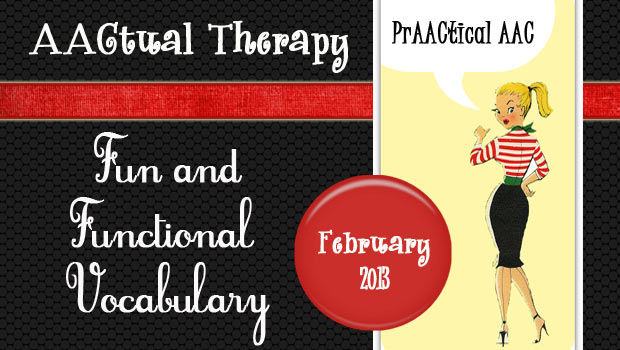
We are delighted to have Shareka Bentham back to share another post about the AACtual therapy she provides to little ones in Barbados. Last month, we followed her along to the zoo where her little friends got to generalize the language skills developed in therapy sessions. In this post, Shareka discusses her approach to something we all struggle with: selecting vocabulary that will both fun and functional.
One of my biggest challenges in AAC is choosing good vocabulary targets, and working on vocabulary instruction for early communicators. By ‘good’ I mean targets which are functional for their everyday settings, representative, and most of all fun for children who are not only beginning communicators, but also beginning AAC users. I have become the AAC ‘specialist’ at a school for children with complex communication needs, so I generally have to cater to the communicative needs of children from the pre-communication to the complex sentence level. It tends to be easier, I find, at the word combination- sentence level stage, as 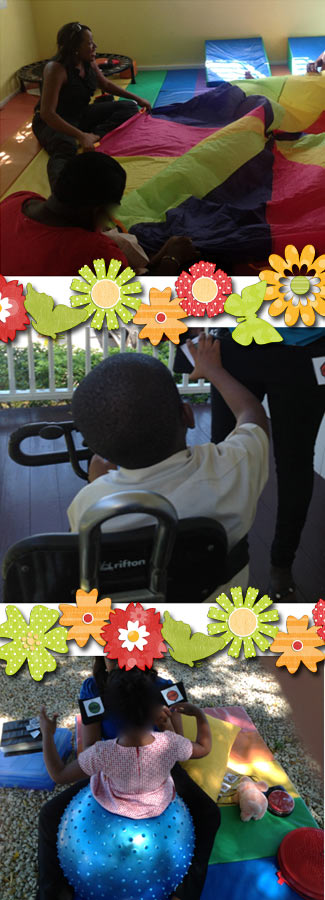 vocabulary words tend to be based on curriculum activities, book themes, etc. However, finding the most effective words for emerging communicators that can be reinforced on a daily basis can be tricky.
vocabulary words tend to be based on curriculum activities, book themes, etc. However, finding the most effective words for emerging communicators that can be reinforced on a daily basis can be tricky.
I have therefore been on a ‘quest for the best vocab’, and having picture symbols that represent the toys and activities I have in my secret treasure chest (I swear I have around 10 symbols for bubbles) has not been enough. This tends to limit the communicator to a noun-based vocabulary, which is not representative of true language development . I always like to have more vocabulary that extends past just nouns and sidestepping “more,” without being too abstract.
I love engaging in movement activities, and many of my early communicators are mainly interested in people play, so some of my personal favourites so far have been: tickle me; more brushing/brush me (for sensory brush); bounce on ball; up; shake; open.
One of my chosen activities (and a personal favourite) was parachute play with a beginning AAC parent-child group. This was a great way to make the idea of ‘stop’ and ‘go’ quite visual with a freezing motion in midair for ‘Stop’ and “Go” to fill in the ‘ready steady….’ routine. We went around the circle with red and green big Mack devices with their corresponding boardmaker symbols, using aided language input and hand over hand prompts to stop and resume the activity. They were very responsive to this, and we even got a surprise vocalization of ‘go’ in the process.Over the past few weeks I realized how much “Ready Steady….Go!” is used in my daily vocabulary, particularly for cause and effect interactions with the younger ones. I decided this week then to use “stop” and “go” as vocab targets across a range of activities with various children to see how effective they were for communication and how functional they would be for use within different settings. The word “go” is also one of Bloom & Lahey’s (1977) relational targets for first word lexicon development.
Another favourite was using the ‘stop’ and ‘go’ symbols during an individual session, to control being pulled on the bike. This little one has shown great improvement in more independent AAC use, as well as discriminating between 2 symbols, so this activity was also perfect for targeting this objective. The activity had to be controlled however, as he wanted to keep going (and therefore not pressing ‘stop’ as much as I wanted him to); so we switched it up so that he had to stop the bike to collect a range of preferred items. This provided greater motivation to choose the ‘stop’ symbol and turned out to be a great fun and functional activity that could also be carried out at home.
We also used ‘stop’ and ‘go’ this week to fill in one of my absolute favourite songs in therapy “Bouncy Bouncy.” I can’t remember where I learnt it, but I love it because it is very interactive, especially for the little ones who like lots of movement. I’ve included the lyrics as well as my subpar vocals.
“Bouncy Bouncy, Bouncy Bouncy Bouncy”
Bouncy Bouncy, now we Stop!
Waaaait….Waaaaait,
Ready, Steady….Go!
This provided a great opportunity to teach AAC use, while keeping the child engaged and motivated, while having fun. (Note that at this time bouncing on the ball is the only activity that will hold her interest and that she is motivated to do anything for).
On reflection I think ‘stop’ and ‘go’ worked well as vocab targets for my early communicators this week. I have also thought about other activities that I can extend these words to, such as starting and stopping music for singing and dancing, playing ‘traffic lights’ to start and stop vehicles in play, or a lovely app with vehicles which I found, called Stop and Go! I’m also interested to explore the use of ‘stop’ in another communicative function- a form of protest, to get another child in class or a sibling to leave them alone.
I’d love to hear your feedback on early targets which you use in therapy for emerging/beginning communicators, as well as if ‘stop and ‘go’ has worked for you. I’m sure that some may argue that direct opposites should not be taught together for early learners, so I am welcome to comments/views on that as well.
Filed under: PrAACtical Thinking
Tagged With: AACtual therapy, Shareka Bentham, vocabulary selection
This post was written by Carole Zangari

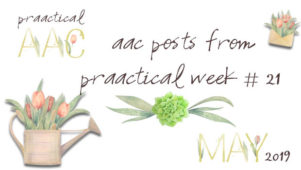
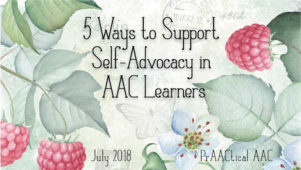
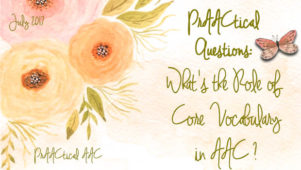

3 Comments
Great article! I like all of the concrete examples you give. Stop and Go with the parachute is perfect. Being a music therapist, I use a lot of stop and go within the context of a fun song. Pairing the music with a movement activity seems to make it even more motivating. Thanks again for sharing!
Ryan Judd, MA, MT-BC
Another great post. Thanks so much for sharing! Seeing you with the parachute made me think about printing out symbols and mounting them on some kind of foam and then tossing them into the parachute. As you move it around you can see what symbols pop out! I’m always looking for ways to get the symbols out of the device and part of the play.
Thank you so much. My daughter is an early AAC user. She is a noun based user big time. We are now just learning how this isn’t a natural way to use language. We decided to start with stop and go. The parachute idea will work for us as well as songs and cars. Our goal is to have her say stop to her brother when he irritates her.